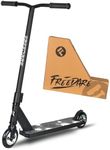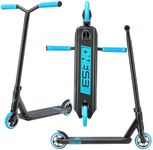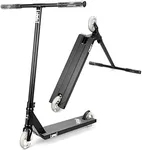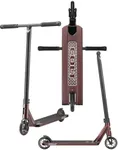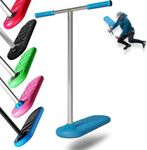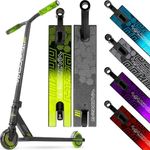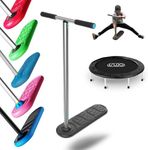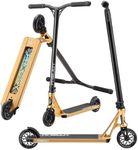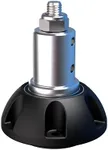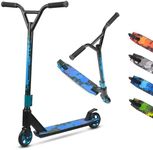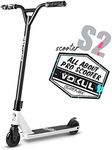Buying Guide for the Best Trick Scooters
Choosing the right trick scooter can make a big difference in your riding experience, whether you're a beginner or an experienced rider. Trick scooters, also known as stunt scooters, are designed to withstand the impacts and stresses of performing tricks and stunts. When selecting a trick scooter, it's important to consider several key specifications to ensure you get a model that suits your skill level, riding style, and personal preferences. Here are the key specs to look out for and how to choose the best fit for you.Deck SizeThe deck is the part of the scooter where you stand. Deck size is important because it affects your balance and maneuverability. Decks come in various lengths and widths. A longer and wider deck provides more stability, which is great for beginners or riders who prefer cruising. A shorter and narrower deck is more agile and easier to spin, making it ideal for advanced riders who perform technical tricks. Choose a deck size that matches your riding style and comfort level.
Handlebar Height and WidthThe handlebar height and width are crucial for control and comfort. Handlebar height should generally be around your waist or just above your hips when standing on the deck. If the handlebars are too high or too low, it can affect your control and cause discomfort. The width of the handlebars should be about the same as your shoulder width. Wider handlebars offer more stability, while narrower ones allow for quicker turns and spins. Consider your height and riding style when choosing handlebar dimensions.
WheelsWheels on trick scooters are typically made of polyurethane and come in various sizes and hardness levels. Larger wheels (110mm or 120mm) provide a smoother ride and are better for cruising and speed. Smaller wheels (100mm) are lighter and more responsive, making them suitable for technical tricks and park riding. The hardness of the wheels, measured in durometer, affects grip and durability. Softer wheels (lower durometer) offer better grip but wear out faster, while harder wheels (higher durometer) are more durable but provide less grip. Choose wheel size and hardness based on your riding environment and style.
Compression SystemThe compression system holds the scooter's fork and handlebars together and affects the scooter's overall performance and maintenance. There are several types of compression systems, including HIC (Hidden Internal Compression), SCS (Standard Compression System), and IHC (Integrated Headset Compression). HIC is simple and durable, suitable for beginners. SCS offers strong and reliable compression, ideal for advanced riders. IHC is lightweight and easy to maintain, great for intermediate riders. Choose a compression system that matches your skill level and maintenance preference.
WeightThe weight of the scooter affects how easy it is to perform tricks and carry around. Lighter scooters are easier to maneuver and perform aerial tricks with, making them suitable for park riders and those who focus on technical tricks. Heavier scooters provide more stability and durability, which is beneficial for street riders who need a robust scooter to handle rough surfaces and bigger impacts. Consider your riding style and physical strength when choosing the weight of your scooter.
BrakeThe brake on a trick scooter is usually a flex fender brake, which is a simple and effective design. The brake is important for controlling your speed and stopping safely. Some brakes are made of metal, which is durable but can be noisy, while others are made of plastic, which is quieter but may wear out faster. Choose a brake that provides reliable stopping power and suits your preference for noise and durability.
